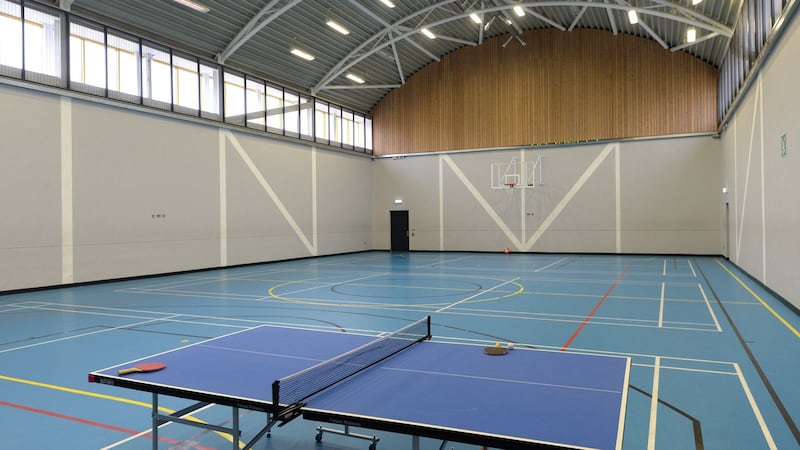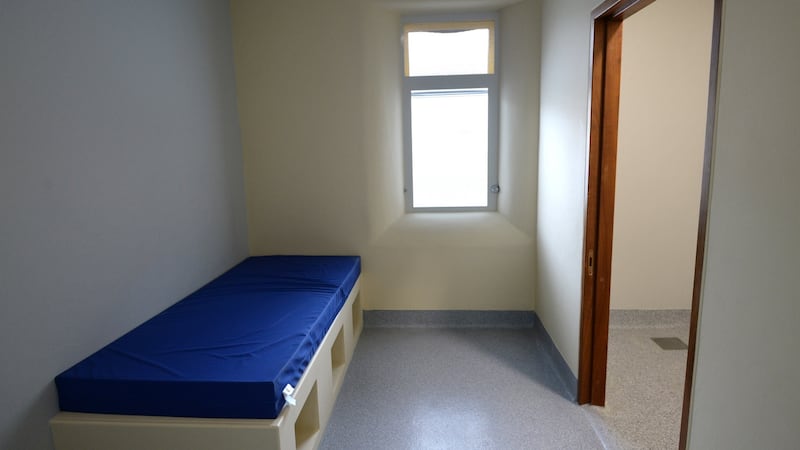Staff in Oberstown Children Detention Campus watched with trepidation as the trial of two 14-year-old boys who murdered of Ana Kriégel neared its end earlier this year.
If the teens were convicted it was inevitable they would be sent to the north Co Dublin facility, and they were not quite sure how they would handle them.
Oberstown is not used to dealing with convicted murderers. Most of the 50, or so young people there are detained for more minor offences, such as burglary, assault and car theft.


There were worries about how the now 15-year-old boys, known publicly as Boy A and Boy B, would be received by the other detainees, both because of the sadistic nature of their crime and the differences in their backgrounds.
Boy A was sentenced to life with a review period after 12 years for Ana’s murder yesterday. The teen was also sentenced to 12 years for her aggravated sexual assault which will run alongside the murder sentence.
His co-accused, known as Boy B, was sentenced to 15 years for Ana’s murder with a review after eight years.
Unlike the vast majority of teens in Oberstown, Boy A and Boy B come from stable family backgrounds and had never been in trouble with the law before.
Although staff worried about how they would be treated, there was no prospect of keeping them segregated.
Oberstown is too small and such a move would also breach their rights.
Once convicted, the boys were sent to Oberstown. They had been there before having spent several weeks there last year before being released on bail.
But this time they were going there as Ireland’s youngest convicted murderers and were unlikely to see freedom for many years.
When gardaí were bringing Boy B to Oberstown he wept and pleaded not to be put in the same cell as Boy A, who he said frightened him. Once they arrived they were separated, and have remained so.
Sources said at first the boys received some trouble - “scuffles and name calling” from the other detainees. However, the situation has since calmed down.
“Most boys forget quite quickly why people are in here. They just tend to get on with things,” said a staff member.
Matters are helped by the high turnover of detainees, with sentences in Oberstown typically measured in months rather than years.
Life in Oberstown is in some ways very different to life in prison but in other ways it is similar. A large fence encircles the campus. Entry to each building is guarded by heavy, card-controlled doors.
The boys’ days will be occupied by classes in the education block, a brightly-decorated space, almost indistinguishable from a small, well-resourced primary school. Charts and art projects line the walls. Class sizes are tiny.
Boy A and B will likely do their Junior Certificate here. It is less common for detainees to sit their Leaving Certificates, but it is possible. A tiny number even go on to third-level.
Much of the education is directed towards practical skills. The largest classroom is the woodwork room, where students make presents for their parents and woodcuttings of things such as their favourite rappers.
Oberstown has several training partnerships with outside companies, including a barista training programme run by Java Republic and fitness training programme run by a chain of gyms.
Boys undergo training with the promise of a job when they get out. However, such a programme is unlikely to be offered to Boys A and B due to the length of their sentences.
In their downtime, the boys will be able to use Oberstown’s impressive range of facilities: a large sports hall, snooker and ping pong tables, outdoor sports pitches, a well-equipped gym.
Staff encourage detainees to do “low-weight, high-repetition” training in the gym. “We don’t want everyone trying to be muscle men,” said one staff member.
At night, they will stay in individual housing units that contain a handful of cells. Each unit has a TV room, a break out area and a kitchen where meals brought from a central canteen are served.
Although Oberstown insists it is not a prison, it has many of the features of one. Detainees sleep on beds made of poured concrete with mattresses on top. Each room has an en-suite bathroom, but these can be boarded off if abused.
The cells doors are large steel contraptions with hatches. At the back of each housing unit is an unfurnished room where particularly troublesome detainees are placed for short periods to cool off.
Detaining young people is incredibly expensive, running to nearly €350,000 a year. This is partly explained by the high number of staff. Each detainee is matched by about five staff members.
Boys A and B will be able to earn certain rewards for good behaviour, including a slightly later bedtime and less restrictive visits.
In the beginning, families are separated from their children in Oberstown by a plastic screen. After a while they are allowed face-to-face visits, monitored by staff from behind one-way glass. Unsupervised visits follow if there are no issues.
The priority here is to stop the flow of drugs.
When Boys A and B turn 18 in about three years time, they will be given a choice: either move onto adult prison immediately or take another six months in Oberstown to prepare themselves.
Before detainees move to adult prison they are visited by prison officers who tell them what to expect and how to stay safe.
Sometimes boys will insist on transferring the minute they turn 18, Oberstown director Pat Bergin told The Irish Times. "And sometimes you get a call a bit later saying they've changed their minds."Most Oberstown transfers go to Wheatfield Prison in south Dublin where staff are trained to manage their entry.









